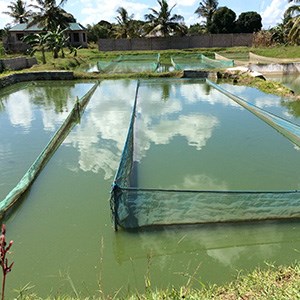Facts:
This research project was carried out by PhD student Francis Pius Mmanda at the University of Dar es Salaam, Institute of Marine Sciences on Zanzibar in Tanzania.

The aim of this project was to find good quality domestic feed materials to reduce dependence on fishmeal and soya in feed for cultivated Tilapia.
The results of this PhD student project will give guidance to how fish feed producers and fish farmers can use, for example household and agricultural residues. This is an important part of developing a system based on bioeconomy instead of being dependent on imports of soya and overexploitation of wild fish stocks.
Aquaculture has increased continuously in most parts of the world and has become an important part of satisfying the increased demand for animal protein.
Tilapia has become one of the world's most cultivated fish species, also in Tanzania, due to rapid growth, good ability to utilize several feed sources and high reproductivity. The slow growth of the aquaculture industry in Africa, especially in Tanzania, is thought to be due, among other things, to lack of fish fry and access to high quality feed for fish. The project therefore includes mapping which feed materials that are used today and analyzing the nutritional value of feed components. In the long term, the project aims at developing feed and cultivation technology that promotes sustainable aquaculture in Tanzania and which can contribute to increased access to high-quality protein for the population of Tanzania.
This research project was carried out by PhD student Francis Pius Mmanda at the University of Dar es Salaam, Institute of Marine Sciences on Zanzibar in Tanzania.